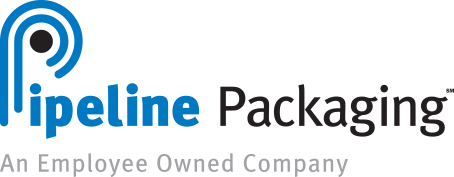Can packaging has that special ability to check off almost every box for any given manufacturer. Starting with style, these small- to mid-volume superstars offer a durable base for any situation, whether it's transportation between warehouses or long-term storage on a shelf. You can rest assured your products will be protected from damage. Unlike bottles, paint cans can even help you save on space with stable stacking capabilities, and their sealed closures are well known for preserving chemicals from premature aging.
The team at Pipeline Packaging knows these fundamentals are only the beginning of the advantages can packaging brings customers. In this latest article, we’re cracking open some of this packaging solution’s most remarkable qualities for modern-day chemical and industrial manufacturers.
A Tale of Two Cans: The Benefits of Tin and Plastic Materials

Typically, customers making adjusting to their packaging systems are first faced with the choice of material. Pipeline Packaging ensures these customers have the breadth of choice when it comes to finding the right can products. Our inventory offers a robust selection, including HDPE plastics, tin, and even hybrid can varieties.
Today, plastic provides the largest array of materials in the can category. With HDPE, PET, and even PVC options, customers can find the solution that is most compatible to their products. Plastic can packaging is an ideal choice for those looking to take advantage of its light weight to reduce shipping costs. Plastic cans also protect against dents and other body damages due to their pliable walls.
Despite their functionality, though, plastic cans have their limitations. Depending on the composition of solutions, some chemical products have the ability to deteriorate plastic packaging over time.
Metal cans are an excellent alternative for customers looking to secure dependable can packaging. Tin cans, in particular, resist corrosion even with harsh chemicals. This quality makes them essential in the automotive, inks, paint, and coatings industries.
Navigating between plastic and metal cans can be a challenging process. Pipeline Packaging assists its customers in making the best decision for their operations by leveraging a network of more than 400 global suppliers and its own packaging industry expertise.
Pipeline Packaging account manager Elle Kiely has assisted customers in finding the perfect can packaging systems for the last two years. She shared some insights into how her customers choose between metal and plastic options.
“Plastic is a popular choice for those packaging larger volumes due to its light weight,” said Kiely. “In these cases, we’re ordering around three-gallon to five-gallon pails. Tin has been the preferred choice for precision packaging like quarts, pints, and smaller volumes.”
Kiely elaborated on other differentiating patterns between these can varieties.
“Steel, tin, and other metal can options are typically used in mass industrial applications for B2B markets,” she added. “Plastic is more common in B2C markets.”
Even with these trends and patterns, Pipeline Packaging grants customers access to a multitude of can packaging products. With volumes as exact as 500 ml to 10 lbs. and materials ranging from PET plastic to aluminum and tin, Pipeline can tailor any customer’s packaging systems to meet market needs.
Can Packaging: The Secret to Sustainability
Packaging often lies at the center of the conversation when it comes to changing habits and encouraging sustainability efforts. Usually, the topic of eco-friendly alternatives turns many minds to plastic recycling. Though plastics make up a considerable fraction of recycling efforts, packaging experts like those at Pipeline Packaging know how to take your green initiatives to the next level with tin can packaging.
“A lot of people don’t realize all the steps involved in recycling products,” said Kiely. “Plastic receives most of the attention, but tin cans require less energy consumption throughout the repurposing process, making them a better recyclable.”
Making an adjustment toward a greener packaging system isn’t limited to those who can utilize plastic materials. Working with Pipeline’s team of packaging experts, you can uncover other sustainability secrets — like tin can packaging — that will reduce your carbon footprint without sacrificing quality or usability.
Education Unlocks Collaboration
Pipeline Packaging is committed to becoming the one-stop packaging shop for its customers. Part of this responsibility lies in staying proactive on hot-button trends like eco-friendly packaging, but also staying in tune with every segment of our industry so we can be an up-to-date, full-service resource for customers.
Continuous education is one of the ways Pipeline ensures team members remain informed on market trends and processes for all customers, including those focused on can packaging.
Kiely shared her experience with these professional development resources.
“Pipeline is very good at educating its employees, even beyond the onboarding process,” said Kiely. “In my time, I’ve had the opportunity to tour two different steel plants and even attend bottle school. These experiences give me the full picture of the ‘packaging pipeline’ so I can better serve my customers.”
She also noted how industry training plays an integral role in the lives of every Pipeline employee, no matter the department.
“It’s not just the sales team participating in our programming,” she said. “The company sends employees in every division to ensure everyone is well informed and can serve customers’ every need.”
The shared expertise in can packaging and other solutions makes internal and external collaboration a breeze, according to Kiely.
“If I don’t know the answer to customer questions, I have complete confidence in my team members to provide an accurate and timely response,” she said.
The chains of expertise explained by Keily lay the foundation for understanding Pipeline Packaging’s ability to collaborate on any can packaging project for any industry. We build lasting relationships with customers by giving them assurance and trust in our capabilities.
She cited a recent example of this relationship in the context of customer uncertainty in the face of the U.S. trade tariffs. With decisions waxing and waning on a daily basis, Pipeline has become a dependable source for regular updates regarding price changes and inventory availability.
Customized for Success with Pipeline Packaging
Beyond its can packaging inventory and experienced team, Pipeline Packaging also assists new and existing customers to create unique, custom packaging products that stand out on shelves and highlight their specific branding. Collaboration on these custom packaging projects represents one of the strongest reasons why Pipeline continues to maintain long-lasting, value-added relationships.
For more than a decade, Pipeline Packaging account manager Gary Watson has been helping customers not only find the right can packaging, but also customize it using value-added services like custom engineering and testing.
About 30 to 40% of Pipeline customers are looking for custom products, shared Watson.
“We start the process by learning what the customer needs,” he said. “Then, we work with packaging manufacturers to create the right products. It could be an automotive customer looking for a square bottle for oil or a bug repellent company looking to source a complete round-bottle sprayer system.”
From large to small corporations, many companies prefer the benefits of custom packaging products and systems. Nearly 40% of these customers collaborate with the team at Pipeline Packaging to manufacture custom molds with the remaining 60% using pre-existent stock molds.
“For instance, a customer may want some unique bottle or can packaging system and will come to us with an idea,” said Watson. “Then, we go to the supplier to collaborate and engineer their unique packaging product.”
These custom molding projects will start with Pipeline’s engineering group. The engineering team immediately engages with manufacturers, the sales team, and the decorating team to ensure customers' products are as specialized as possible.
Using our connections in the packaging industry, Pipeline will work with the manufacturer, who will provide a drawing based on the customer intake. Once approved, we’ll help facilitate the creation of a model by the manufacturer before developing the product mold itself. Once finalized and produced, customized bottle, can, or other packaging systems can make their ways to warehouse and store shelves.
Though our tight-knit relationships with packaging manufacturers streamlines the customization process, Watson noted other ways Pipeline delivers on its promises to customers.
“We have a lot of capabilities that help customer products make it to store shelves,” he said. “With specification validation, Pipeline can ensure you have all the necessary components and closures to meet your primary packaging needs. Even material selection is simple with a team dedicated to determining the right plastic and glass containers for your needs.”
Other advantages like just-in-time (JIT) deliveries as well as warehousing and logistics services can ensure product arrives as needed while reducing transaction costs through IPO consolidations. And with a variety of global manufacturers, the ability to make a single, customized system using can packaging or other components is available at your fingertips.
From switching to a more sustainable option to customizing the perfect comprehensive solution, Pipeline Packaging is always ready to lend our packaging expertise. Contact us today to partner with a packaging resource that can fulfill your specific needs and open doors to more opportunity.


